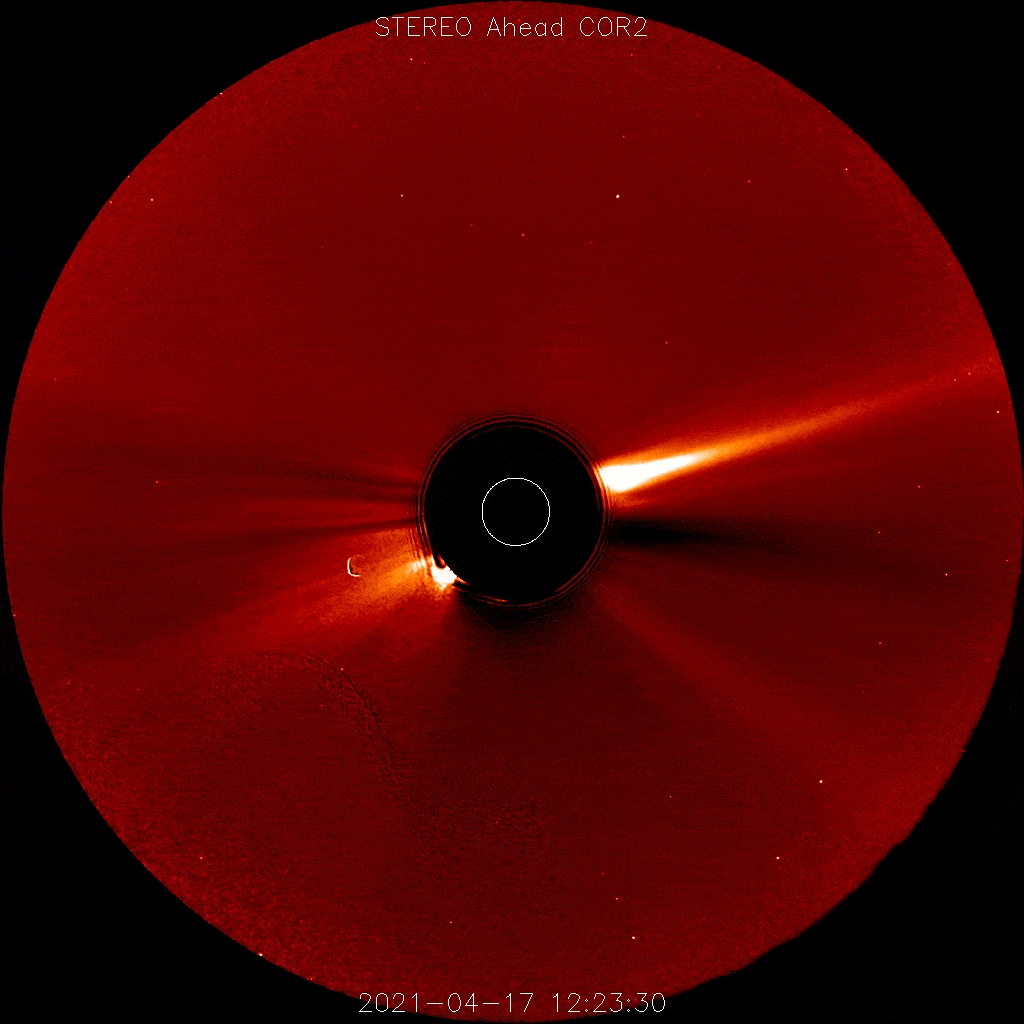NASA’s STEREO-A and ESA/NASA’s SOHO spacecraft detected a coronal mass ejection, or CME, leaving the Sun on April 17 at 12:36 p.m. EDT. This CME did not impact Earth but did move toward Mars, passing the planet in the late evening and early morning hours of April 21 and 22.
The CME reached Mars two days after NASA’s Ingenuity Mars Helicopter became the first aircraft in history to make a powered, controlled flight on another planet. NASA tracks such solar eruptions because solar eruptions can trigger particle and radiation events that pose a risk to astronauts and sensitive spacecraft electronics. As astronauts venture beyond Earth’s protective magnetic field to the Moon and Mars, NASA’s Moon to Mars Space Weather Office at NASA Goddard Space Flight Center in Greenbelt, Maryland, in collaboration with the Community Coordinated Modeling Center tracks solar activity to give advanced warning to spacecraft and crewed missions.
The CME was a relatively slow one, traveling between 1.5 and 1.8 million miles an hour (700 and 800 kilometers per second). It caused no issues for concern and the Ingenuity team did not need to take any steps to protect the helicopter. As we go forward, however, NASA will continue to include space weather updates as a factor when making decisions around our technology – and one day, astronauts – on Mars.



























